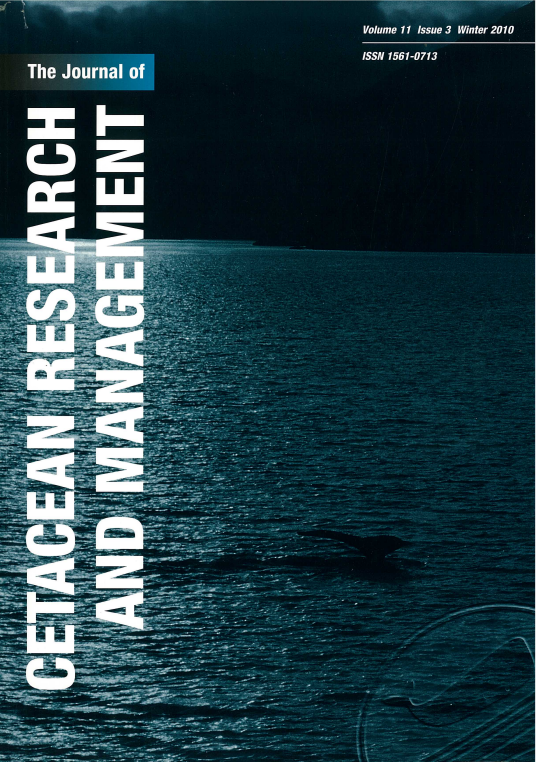Habitat and abundance of cetaceans in Atlantic Ocean continental slope waters off the eastern USA
Main Article Content
Abstract
This study quantifies the abundance and spatial distribution of the cetacean community occupying continental shelf edge and inner continental slope waters along the US southeast Atlantic coast. A shipboard visual line-transect survey was conducted between June and August of 2004 that included effort in waters >50m deep encompassing the shelf break and inner continental slope off the US east coast between 28°N and 38°N latitude. The abundance of nine cetacean taxa was estimated using line-transect distance analysis and an independent observer approach to correct for visibility bias. Canonical correspondence analysis was used to examine the spatial distribution of the cetaceans encountered during the survey as a function of surface temperature, surface salinity, surface fluorescence, bottom depth, and bottom slope. The abundance estimates for most species were much higher than those from a study of the area conducted in 1998. This is primarily due to increased coverage of the shelf-break region and correction for visibility bias. The multivariate analysis indicated four distinct groups of cetaceans that partitioned habitat as a function of salinity, depth, and a latitudinal gradient. These groups were associated with specific water masses and hydrographic features including mid-Atlantic shelf waters (Group I), the shelf break (Group II), mid-Atlantic slope waters (Group III), and south Atlantic slope water (Group IV). Areas where water masses converge such as the continental shelf break along the mid-Atlantic and near Cape Hatteras, North Carolina are therefore areas of both high diversity and density of cetaceans.
Article Details

This work is licensed under a Creative Commons Attribution-NonCommercial 4.0 International License.
You are free to:
- Share copy and redistribute the material in any medium or format
- Adapt remix, transform, and build upon the material
- The licensor cannot revoke these freedoms as long as you follow the license terms.
Under the following terms:
- Attribution You must give appropriate credit, provide a link to the license, and indicate if changes were made. You may do so in any reasonable manner, but not in any way that suggests the licensor endorses you or your use.
- NonCommercial You may not use the material for commercial purposes.
- No additional restrictions You may not apply legal terms or technological measures that legally restrict others from doing anything the license permits.

